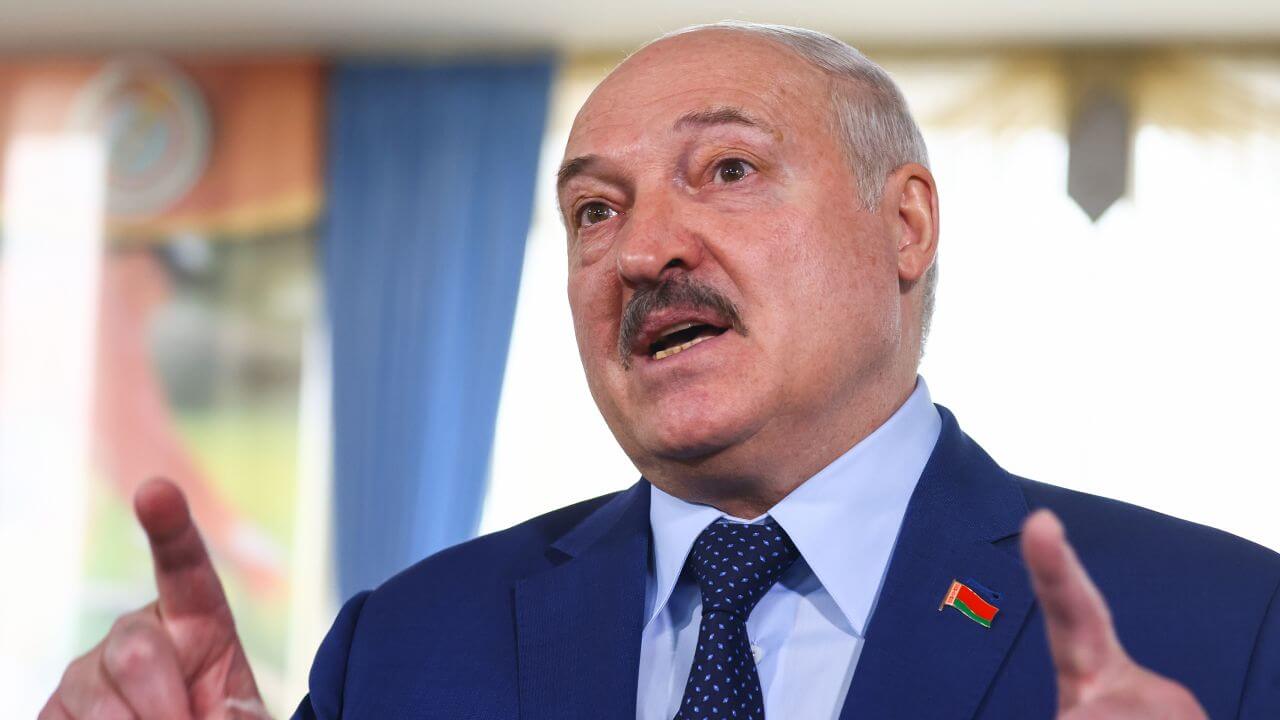On Thursday, the Belarusian Ministry of Interior Affairs added “Zhive Belarus,” or “Long Live Belarus!,” and “Long live!” to its list of Nazi symbols, effectively banning people from using the rallying cries during protests against the Lukashenko government.
According to the decree, people, who use symbols from the government’s Nazi list more than once are subject to four years in prison. Authorities argue the salute is a “collaborationist greeting” used by “the 30th Waffen-SS division, which consisted mainly of former fighters of the Belarusian National Defense units.” It is used by Belarusian democratic political forces and members of the Belarusian diaspora.
The Lukashenka regime has added the historic greeting "Long live Belarus!" (Жыве Беларусь!) to the list of Nazi symbols - meaning criminal liability for its use. It is another attack on our identity. They are trying to erase everything that makes us Belarusian, even our language. pic.twitter.com/AMCscxk5Zz
— Sviatlana Tsikhanouskaya (@Tsihanouskaya) November 10, 2022
According to the Belarusian bureau of Radio Free Europe/Radio Liberty, President Aleksander Lukashenko’s regime “has for many years been trying to... present the national symbols of Belarus – which appeared long before WWII – as Nazi symbols.”
While speaking with the STV television channel in November last year, historian and deputy of the House of Representatives Ihar Marzalyuk argued that “Long Live Belarus!” was a copy of the Nazi salute “Zig Heil,” but acknowledged that it predates World War Two (WWII).
The slogan was first used by Belarusian literary great Yanko Kupala in his poem titled ‘This is a cry that Belarus lives’ in 1905-1907. It was also adopted by the First All-Belarusian Congress in 1917. According to Vytaut Kipel, the director of the Belarusian Institute of Science and Art in New York, it “was used as a political national appeal already in 1918, the rallying cry was used at student meetings in the 20s in Prague, later at public meetings in Paris, Vilnius.” Following WWII, it was often modified to “Long Live Soviet Belarus” when Minsk was under Soviet rule.
In the 80s, it was used in rallies to support Belarus’ independence movement, and a song called “Long live Belarus” was also in the running to become the country’s national anthem in the 90s. In fact, in January last year, Associate Professor of Constitutional Law Ivan Plyakhimovich proposed to enshrine it in the Constitution, saying, “Official recognition of the state motto would contribute to the development and unity of the Belarusian nation, strengthening its spirit, and would show the whole world our distinctiveness.”
Today, the Lukashenko regime has recognized the phrase "Long Live Belarus!" as a Nazi symbol.
— Pavel Latushka (@PavelLatushka) November 10, 2022
But I believe that #Belarusians & #Belarus will live & will live forever! And very soon without #Lukashenko & his junta. pic.twitter.com/QAJG0pUvHv
The government first referred to it as an “anti-state slogan” after the 2006 protests following the presidential election. Since the controversial presidential election in 2020, protesters opposing the Lukashenko regime have expanded the use of the slogan.
The Lukashenko administration has cracked down heavily on anti-government protests since August 2020, with police using water cannons, rubber bullets, flash grenades, and teargas to quash protests. Even in the past, Lukashenko has crushed protests with riot police and hefty jail terms, actions that prompted international sanctions.
The United Nations (UN) High Commissioner for Human Rights, Michelle Bachelet, had condemned the use of force by Belarusian security forces on largely peaceful protests throughout the country against the election results. Authorities arrested at least 6,000 people—including many journalists—killed at least 15 in the violent aftermath of a vote that extended Lukashenko’s 26-year rule.
#Belarus The regime deems “Long live Belarus!” to be a Nazi slogan. From now on, I will use it even more often:
— Hanna Liubakova (@HannaLiubakova) November 10, 2022
Long Live Belarus! Жыве Беларусь!
The war criminal in Minsk wants to destroy our history, everything that unites my nation and separates us from Russia pic.twitter.com/f1SJOPxKZO
Lukashenko has refused demands to step down and rejected insurmountable evidence that the election was neither free nor fair. He has accused the opposition of trying to stage a coup, labelling them “wild Nazis” and “former tricksters” attempting to seize power, and threatened to take “adequate measures” in response to such actions.
In September 2020, Estonia, Latvia, and Lithuania also imposed sanctions on 30 Belarusian officials, with Lukashenko topping the blacklist. The United Kingdom (UK) and Canada followed suit, with many countries describing Belarus as a ‘terrorist state.’
Following an emergency virtual meeting of the European Council (EUCO) last year, European Union (EU) leaders announced that they would not recognise the results of the disputed Belarus election and have since levelled a host of sanctions for “violence, repression, and election fraud.”
The regime recognized the slogan "Жыве Беларусь" as a nazi symbol (up to 4 yrs in jail). The slogan means "Long live Belarus". 🇧🇾 regime doesn't want Belarus to exist. Banning our historical motto of freedom & independence won't obliterate Belarusians. #Belarus will live forever! pic.twitter.com/ZjymkcpwGa
— Dzianis Kuchynski (@Dz_Kuchynski) November 10, 2022
Meanwhile, Russian President Vladimir Putin assured his close ally Lukashenko that Russia “would fulfill all its obligations” to help the former Soviet state quell the protests.
In November 2020, in the face of constant daily protests, Lukashenko said he would leave office after a new constitution came into force. However, in February last year, he decried the months-long protests against him as a foreign-directed “blitzkrieg,” and boasted that the onslaught had failed to overthrow his government. In March 2021, he removed all doubt by declaring that there would be “no transfer of power.”

